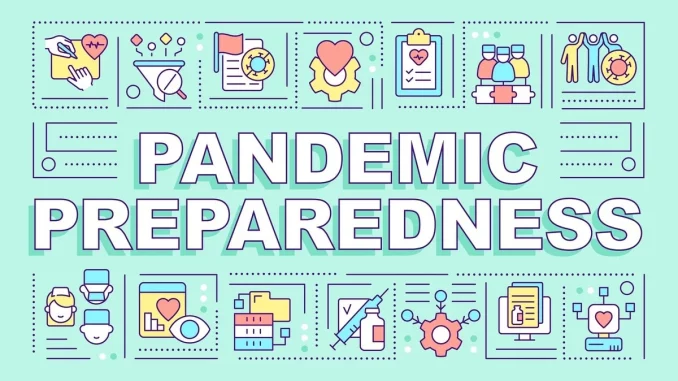
In these unprecedented times, the COVID-19 pandemic has brought about immense challenges and uncertainties for individuals and businesses alike. As the world grapples with the impact of this global crisis, insurance companies have stepped up to offer relief to policyholders in various ways. From addressing the business interruption protection gap to providing cost-sharing waivers and premium relief for health insurance, insurers are playing a crucial role in supporting their customers during these trying times. In this blog post, we will explore how insurance companies are responding to the pandemic and offering much-needed assistance to policyholders across different sectors. So let’s dive in and discover how these measures can make a significant difference in navigating through these turbulent waters!
Addressing the COVID-19 Business Interruption Protection Gap
H2: The COVID-19 pandemic has caused unprecedented disruptions to businesses worldwide. From mandated closures to supply chain interruptions, companies have faced significant financial losses due to this unforeseen crisis. However, many policyholders were taken aback when they discovered that their business interruption insurance did not provide coverage for pandemic-related losses.
One of the key characteristics of the pandemic risk is its widespread impact across industries and regions. Unlike localized events such as natural disasters, a global health crisis like COVID-19 poses unique challenges in ensuring broad coverage for business interruptions.
Business interruption policies typically require physical damage or loss as a trigger for coverage. This narrow definition has left policyholders without recourse when facing revenue losses due to government-mandated shutdowns or reduced customer demand during the pandemic.
To address this protection gap, insurers are exploring longer-term policy responses specifically tailored to pandemics. These efforts aim to develop comprehensive solutions that can offer financial support and stability in similar future crises.
Another proposal gaining traction is the establishment of Pandemic Risk Insurance Programs (PRIPs). Similar in structure to existing catastrophe risk programs, PRIPs would involve public-private partnerships aimed at providing affordable and accessible insurance coverage against pandemics.
By addressing this business interruption protection gap through innovative solutions and collaborative approaches, insurers are striving to ensure greater resilience for businesses while minimizing uncertainty during uncertain times ahead. Stay tuned as we delve into more ways insurance companies are offering relief amidst these challenging circumstances!
Characteristics of the Pandemic Risk
The COVID-19 pandemic has brought to light the unique characteristics and challenges posed by this type of risk. Unlike traditional catastrophes such as natural disasters, pandemics have distinct features that make them particularly difficult to predict and manage.
One key characteristic of the pandemic risk is its global nature. Unlike localized events, a pandemic can spread rapidly across borders, affecting populations worldwide. This makes it challenging for insurance companies to assess and price the risk accurately.
Another challenge is the uncertainty surrounding pandemics. The timing, severity, and duration of an outbreak are often unpredictable, making it difficult for insurers to estimate potential losses accurately. This uncertainty also impacts policyholders who may be unsure about their coverage in such unprecedented situations.
Moreover, pandemics pose systemic risks that can have far-reaching consequences. The interconnectedness of our modern world means that disruptions in one sector or region can quickly cascade into others. This complexity adds another layer of difficulty when it comes to managing pandemic risks effectively.
In addition to these challenges, there are also issues related to insurability. Traditional business interruption policies may not cover losses caused by pandemics explicitly. As a result, many policyholders find themselves without adequate protection during these crises.
Understanding the characteristics of the pandemic risk is crucial for both insurers and policyholders alike. Developing innovative solutions that address these unique challenges will be vital in ensuring better preparedness and response in future outbreaks.
Key Uninsured Exposure: Business Interruption
Business interruption has emerged as a significant uninsured exposure during the COVID-19 pandemic. With widespread lockdowns and restrictions, many businesses have been forced to halt operations, resulting in substantial financial losses. However, insurance coverage for business interruption is not always straightforward.
One challenge lies in defining the trigger for coverage. Traditional business interruption policies typically require physical damage to property as the cause of the interruption. This means that losses due to a virus or government-imposed shutdown may not be covered under standard policies.
Another issue is the scope of coverage. Even if a policy includes coverage for pandemics or infectious diseases, there may be limitations and exclusions that restrict payouts.
Furthermore, insurers face challenges in assessing and pricing pandemic risk accurately. The unprecedented nature of this crisis makes it difficult to predict future outbreaks and their impact on businesses.
Addressing these gaps requires innovative solutions from insurance companies and policymakers alike. Various proposals have been put forward, such as creating pandemic risk insurance programs or expanding existing catastrophe risk programs to include business interruption coverage.
While business interruption remains a key uninsured exposure during this pandemic, efforts are underway to bridge the gap in coverage. By developing comprehensive solutions and collaborating with stakeholders across industries, insurance companies can help provide relief to policyholders affected by disruptions caused by unforeseen events like COVID-19.